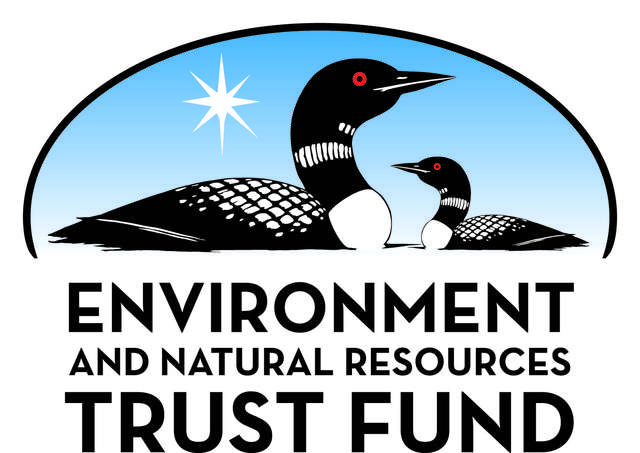Top > Professional Development > Zero Barriers in STEM Education: Accessibility and Inclusion Program
Zero Barriers in STEM Education: Accessibility and Inclusion Program
 |
Forwarded from the Smithsonian:
Zero Barriers in STEM Education: Accessibility and Inclusion Program
Increasing STEM Opportunities Through Accessibility and Inclusion for All
Dear Educator,
On July 12 – 14, 2022, the Smithsonian Science Education Center will host an education summit as part of its Zero Barriers in STEM Education Accessibility and Inclusion Program, an initiative focused on increasing the prevalence of accessible and inclusive practices in STEM education and school culture for students with disabilities. The convening brings teams of educators representing schools, districts, and state education agencies across the US together to develop logic models that focus on a problem of practice related to accessible and inclusive STEM programs and school culture for students with disabilities.
Over the course of 2 ½ days in our nation’s capital, teams, and their assigned mentor work together to identify their problem and develop their plan of action to be implemented for 18 months following the summit. Developing a logic model at the summit is the first of many steps that educators take to serve as change agents in their organizations, when participating in this program. As team members build their capacity to be leaders and initiate change in their educational ecosystem, we also want them to understand the importance of engaging all stakeholders in decision-making processes, especially when addressing systemic issues. To that end, teams must also be comprised of a diverse group of individuals that operate within different areas of the organization.
Mid-Year Professional Learning
Following the Summit, selected summit teams and their mentors will be expected to participate in a virtual professional development a few months after they begin implementing their logic models. This series of workshops will focus on accessibility and other topics relevant to expanding STEM opportunities for students with disabilities.
Ideal Team Composition
Who might serve on a leadership team?
- Decision-makers (school or district admin.)
- In-service teacher
- Instructional coach
- Special Education Teachers
- Parent or community partner
The goals of the Summit are to provide selected teams an opportunity to:
- Develop an action plan (logic model) that addresses a problem of practice in accessible and inclusive STEM teaching, programming, and culture in their organization. The goal is to ensure that students with disabilities see STEM as accessible to them, and that all students, no matter where they fall along the continuum of human ability, understand how to use Universal Design practices when engineering solutions to problems.
- Collaborate with a body of peers to exchange knowledge and initiate changes that promote accessibility in STEM education for all students with disabilities in their school communities.
- Engage with a network of STEM educators who are interested in increasing awareness and developing sustainable solutions to address accessibility concerns in STEM education.
As a result of attending the Summit participants will also:
- Gain an understanding of the state of accessibility in education across the nation.
- Develop leadership skills and partnerships with other educators.
- Learn about existing organizations and communities that support educators to provide equitable STEM learning opportunities.
Deadline for teams and mentors to apply is May 27, 2022, at 5pm Eastern. Click here to learn more or apply for the program.
Travel and accommodations provided by the Smithsonian.
Learn more about this program at: https://www.ssec.si.edu/event/
______________________________
About the Zero Barriers in STEM: Accessibility and Inclusion Program
Underrepresentation of various viewpoints in STEM is a problem that isn't often associated with people with disabilities. However, research shows that individuals with disabilities makeup 26% of the population yet, according to the National Science Foundation (NSF) they hold the fewest number of post-secondary STEM degrees and occupations within the labor force.
In response to the lack of representation in STEM from people with disabilities, the Smithsonian Science Education Center has established The Zero Barriers in STEM Education: Accessibility and Inclusion program to offer educators support in designing enriching equity-based STEM experiences for all students, especially students with disabilities.
This program sees STEM educators as leaders in their school communities. Through that lens, the program works to help educators increase the prevalence of accessible and inclusive STEM practices and programming at their school sites. Zero Barriers supports STEM leadership teams in the following three ways: assisting a school, district or state team of educators, in the development of an action plan that addresses a specific area of need related to inclusive STEM programs, practices or school culture at the Zero Barriers in STEM Education: Accessibility and Inclusion Summit; supplying teachers with resources and materials for implementation of accessible STEM practices; and providing professional learning opportunities to help educators understand how to support students with disabilities in their STEM classrooms during the school year.
We believe that as educators increasingly become aware of teaching approaches that reduce barriers to entry, everyone along the continuum of human ability can fully participate in STEM learning, especially students who traditionally had limited access. As students engage in classrooms created with universal design in mind, they are empowered to explore their STEM identities.
Our Vision
The desired outcome for this program is to increase the presence, achievement, and persistence for underrepresented student populations in STEM fields. It should be noted that although the Zero Barriers program is focused on students with disabilities, we understand the intersection of disability, gender, race, ethnicity, and other sociocultural identities, which is why we have chosen to use the term “underrepresented student populations”.
To achieve this goal, SSEC has designed the Zero Barriers program to meet three objectives:
Provide resources and support to STEM educators
- STEM educators engage in professional learning opportunities to develop their confidence and capacity to provide equitable STEM opportunities for all learners regardless of where they are on the spectrum of human ability.
- Provide tools that teachers can use in their classrooms to make STEM learning engaging and inclusive.
Support all stakeholders as leaders and change agents
- Educators, advocates, and community partners, as leaders and change agents in their school community, develop and implement a plan of action related to a problem of practice in accessible STEM learning and programming.
Establish a community to exchange knowledge and form alliances
- Establish a network committed to collaborating and improving accessibility and inclusion for all students in preK-12 STEM.









 Minnesota science teachers should know about:
Minnesota science teachers should know about: